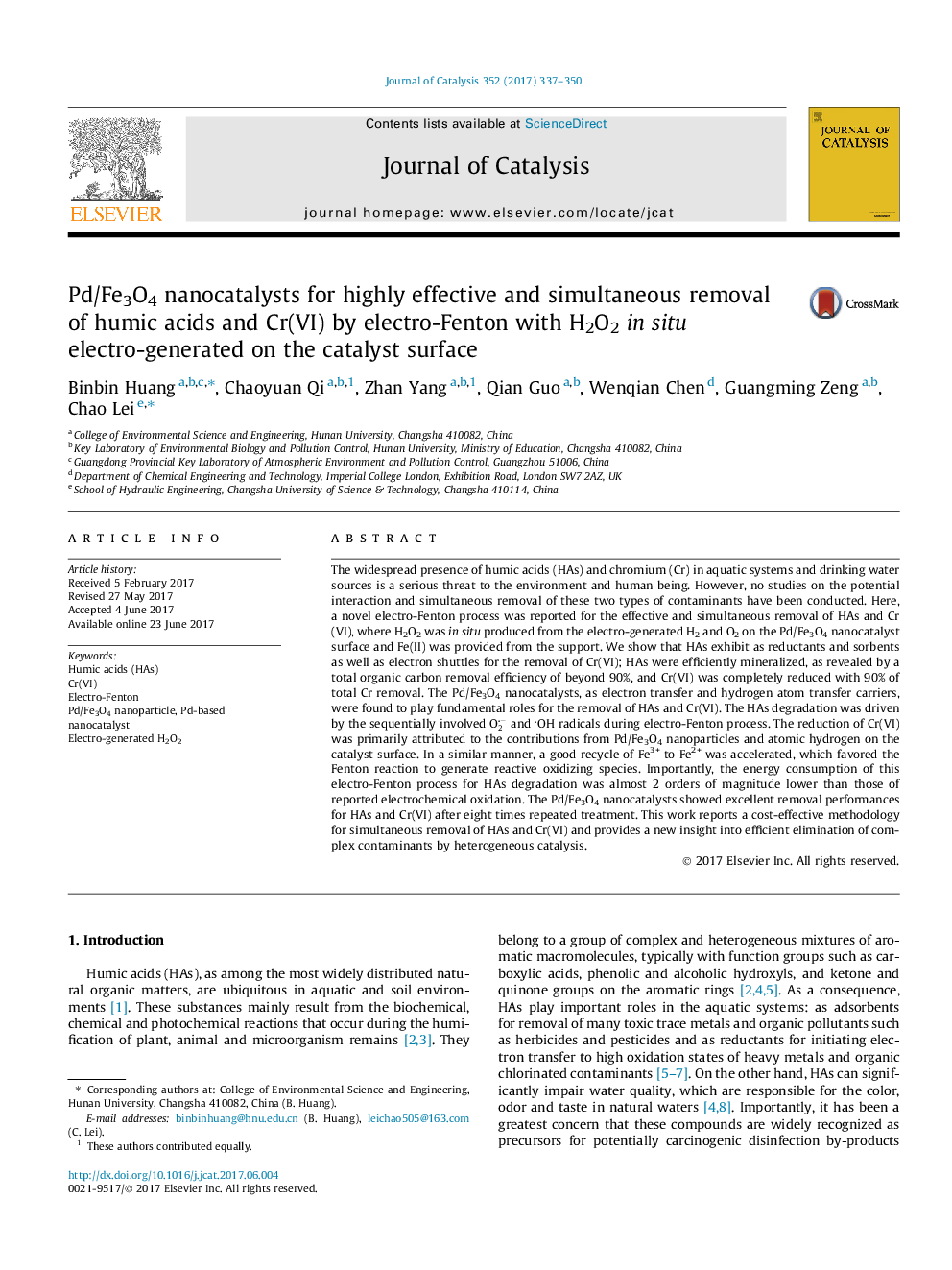| کد مقاله | کد نشریه | سال انتشار | مقاله انگلیسی | نسخه تمام متن |
|---|---|---|---|---|
| 6455407 | 1419757 | 2017 | 14 صفحه PDF | دانلود رایگان |

- A novel electro-Fenton process for effective removal of HAs and Cr(VI) was reported.
- The potential interaction of chromium with HAs was firstly indicated.
- The Pd/Fe3O4 nanocatalysts played fundamental roles for removal of HAs and Cr(VI).
- Much lower energy consumption than reported electrochemical oxidation was attained.
- High removal efficiency of HAs and Cr(VI) was obtained than other reported methods.
The widespread presence of humic acids (HAs) and chromium (Cr) in aquatic systems and drinking water sources is a serious threat to the environment and human being. However, no studies on the potential interaction and simultaneous removal of these two types of contaminants have been conducted. Here, a novel electro-Fenton process was reported for the effective and simultaneous removal of HAs and Cr(VI), where H2O2 was in situ produced from the electro-generated H2 and O2 on the Pd/Fe3O4 nanocatalyst surface and Fe(II) was provided from the support. We show that HAs exhibit as reductants and sorbents as well as electron shuttles for the removal of Cr(VI); HAs were efficiently mineralized, as revealed by a total organic carbon removal efficiency of beyond 90%, and Cr(VI) was completely reduced with 90% of total Cr removal. The Pd/Fe3O4 nanocatalysts, as electron transfer and hydrogen atom transfer carriers, were found to play fundamental roles for the removal of HAs and Cr(VI). The HAs degradation was driven by the sequentially involved O2- and OH radicals during electro-Fenton process. The reduction of Cr(VI) was primarily attributed to the contributions from Pd/Fe3O4 nanoparticles and atomic hydrogen on the catalyst surface. In a similar manner, a good recycle of Fe3+ to Fe2+ was accelerated, which favored the Fenton reaction to generate reactive oxidizing species. Importantly, the energy consumption of this electro-Fenton process for HAs degradation was almost 2 orders of magnitude lower than those of reported electrochemical oxidation. The Pd/Fe3O4 nanocatalysts showed excellent removal performances for HAs and Cr(VI) after eight times repeated treatment. This work reports a cost-effective methodology for simultaneous removal of HAs and Cr(VI) and provides a new insight into efficient elimination of complex contaminants by heterogeneous catalysis.
113
Journal: Journal of Catalysis - Volume 352, August 2017, Pages 337-350